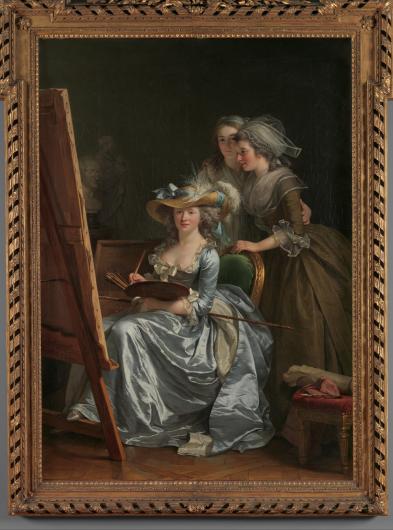
The facade of the Metropolitan Museum of Art in 1914.
The Metropolitan Museum of Art is the United State's greatest art museum and perhaps the greatest in the world. While the museum, like many others, has a history rooted in colonialism, it has taken steps in recent years to make amends for its troubled past.
This list presents a handful of notable, historical moments from the institution's 150-plus years of existence. From the museum’s murky accession of its first artwork in 1870 to the ground-breaking introduction of its Open Access Initiative in 2017, The Met and its artworks have reflected the cultures they came from.
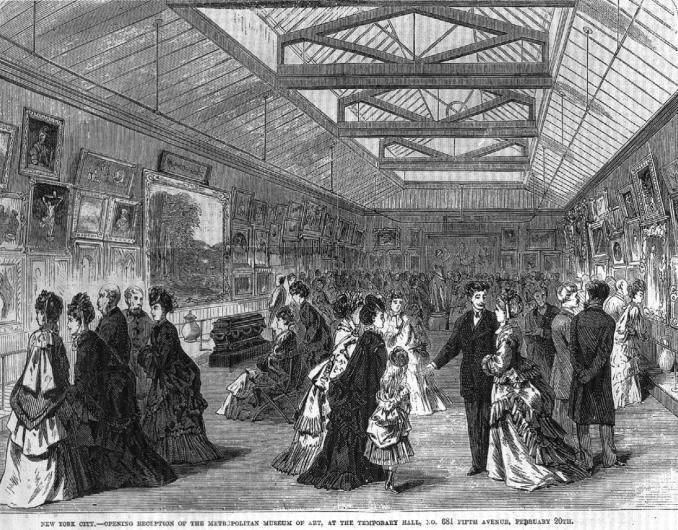
Opening reception of the Metropolitan Museum of Art, at the temporary hall, No. 681 Fifth Avenue, February 20th published in Frank Leslie's Illustrated Newspaper in 1872. Wood engraving.
Founded in 1870, the Met was always intended to be a space within New York City that housed and presented to the public a collection of artworks spanning a vast range of medium, origin, and time period. The museum's concept was created by a group of Americans who met in Paris in 1866 and agreed to create a space for art, history, and culture in the United States. The Met originally opened in the Dodworth Building at 681 Fifth Avenue.
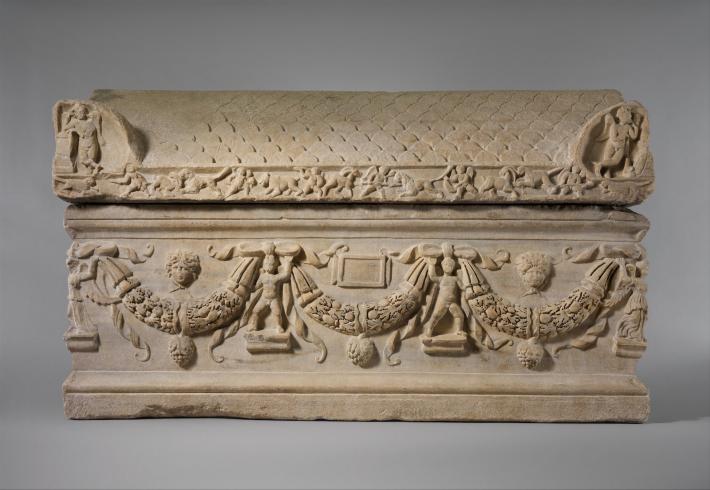
Marble sarcophagus with garlands. Roman, Severan period, ca. A.D. 200–225. Marble. 53 x 88 in. (134.6 x 223.5 cm).
This Roman sarcophagus was gifted to the Met by J. Augustus Johnson just a few months after the Museum’s founding. An American diplomat serving overseas, Johnson—like many in his position during this era of unbridled American expansionism—took up archeology as a hobby while serving in Beyrouth, Syria (now Beirut, Lebanon). Today, it is important to acknowledge that the casual practice of archeology, especially by representatives of foreign governments, is illegal in most countries.
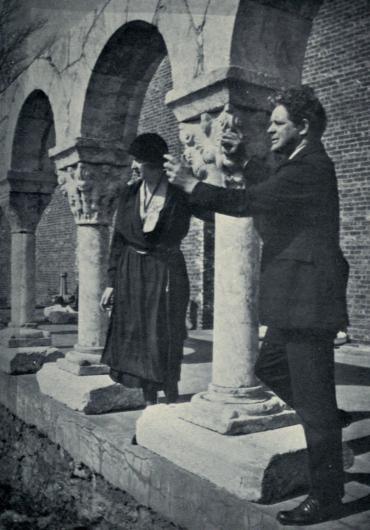
George Barnard and Clare Sheridan at his Cloisters in New York City, 1921.
The Met’s collection of medieval sculpture is one of its most remarkable. In large part, it was acquired by the singular sculptor, collector, and art dealer George Grey Barnard (1863–1938). In 1914, Barnard opened his own Cloisters to display the collection in a medieval context. In 1925, the Met acquired his collection and began to consider creating a similar, yet larger, space to display these items.

Exterior view of the gardens at the Bonnefont section of The Met Cloisters.
Designed by Charles Collens (1873–1956), The Met Cloisters opened to the public on May 10,1938. Built on land acquired and donated by John D. Rockefeller Jr. (1874–1960), they serve as home to and embodiment of exemplary medieval European art and architecture. Currently, The Cloisters hold around 2,000 works of art that span from stained glass to illuminated manuscripts.

Members of the MFA&A around the Ghent Altarpiece during recovery from the art depot in the Altaussee salt mine, 1945.
One of the most fascinating curators to have worked at the Met, Edith Standen (1905-1998) also served in WWII as an officer in the Monuments, Fine Arts & Archives Program (MFA&A). Commonly referred to as the “Monuments Men,” the men and women of this program worked to protect and relocate works of art during the war. Standen was the only female member to receive a Bronze Star for her work and the only woman to sign the Wiesbaden Manifesto.
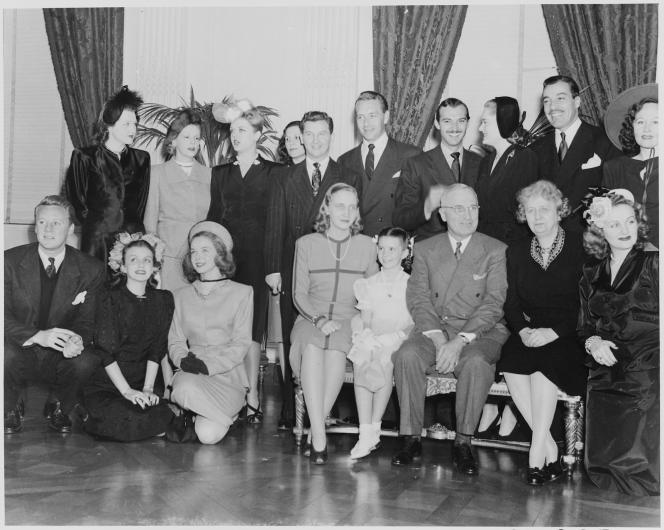
A gaggle of socialites and film stars pictured with President Harry Truman and family at the White House. Founder of the Met Gala Eleanor Lambert stands in the back row, second from the left end.
The Met Gala began in 1948, when it was established by Eleanor Lambert Berkson as a fundraiser for the Costume Institute annual exhibition. Today, largely thanks to Anna Wintour and Vogue‚ the event is one of the most visible in the world of celebrity and provides a major source of capital which the museum uses to fund exhibitions and make acquisitions.
Adélaïde Labille-Guiard, Self-Portrait with Two Pupils, Marie Gabrielle Capet (1761–1818) and Marie Marguerite Carreaux de Rosemond (died 1788), 1785. Oil on canvas. 83 x 59 1/2 in. (210.8 x 151.1 cm).
In February of 2017, The Met launched its Open Access Initiative, making images of and data regarding public-domain artworks in its collection accessible online and available for unrestricted use. Under Creative Commons Zero (CCO), anyone can download, remix, and share high-quality images of the Met’s collection.
Anna Claire Mauney
Anna Claire Mauney is the former managing editor for Art & Object. A writer and artist living in North Carolina, she is interested in illustration, the 18th-century, and viceregal South America. She is also the co-host of An Obsessive Nature, a podcast about writing and pop culture.![]()




